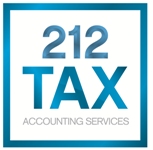As 2011 quickly comes to a close, now is a good time to consider year-end tax strategies that will help you reduce your tax bill. Deferring income to next year and accelerating deductions provides taxpayers with the several opportunities to do this.
Self-employed & small business taxpayers can defer income by delaying December billings until after year-end. Regular employees who are expecting a bonus can try to have it paid in 2012. Deferring income may allow taxpayers to claim larger deductions, credits and other tax breaks that are phased out based on the taxpayer’s adjusted gross income. Estimated state & local income taxes paid before 12/31/11 can usually be deducted on 2011 tax returns.
If beneficial, taxpayers may claim an itemized deduction for state and local sales taxes paid instead of deducting their state & local income taxes. You can use actual receipts or the IRS provided tables to determine the amount of sales tax to deduct. In addition to using the IRS tax tables, taxpayers can add sales tax paid on the purchase of motor vehicles, boats, aircraft, homes, and materials to build a home to the amount that was determined under the tax table.
Eligible taxpayers can claim a non-business energy credit for qualifying expenses for property placed in service before 2010. The credit is subject to a $5oo lifetime limit. Expenses for qualified energy property included: exterior windows and doors, insulation material or system designed to reduce the home’s heat loss or gain, and certain metal off or asphalt roof installed on the home.
There are tax benefits for saving for higher education. IRC section 529 plans is one example. Under this plan an individual may contribute to a qualified tuition program on behalf of any beneficiary. Investment contributions to a 529 plan grow tax-free and the distributions to pay for the beneficiary’s qualified education expenses are tax-free to the beneficiary. Contributions are not deductible on the federal return but in certain states individuals can get a tax credit or deduction for contributions on their state return.
New York residents can take contribute to a New York State 529 college savings plan and deduct up to $5,000 per year ($10,000 for married filing joint) on their New York State tax return. Withdrawals are exempt from New York State income tax when used for qualified higher-education expenses. Earnings on your withdrawals are exempt from federal income tax when used for qualified higher-education expenses and assets grow tax-deferred.
The Tuition and Fees Deduction can be taken for up to $4,000 as an above the line deduction for qualified higher education expenses. Qualified education expense includes tuition and related out-of –pocket expenses that are require for enrollment or attendance. The tuition is limited to $2,000 for taxpayers with a modified adjusted gross income in excess of $65,000. It is completely phased out for modified AGI in excess of $80,000 ($160,000 for married filing joint).
Self-employed & business taxpayers can elect to expense up to $500,000 for qualified property acquired for use in a trade or business. This is called Section 179 expensing. The deduction begins to phase out once more than $2,000,000 of qualifying property is purchased and placed into service during the year. For tax years beginning in 2012, the Section 179 deduction will be reduced to $139,000 and the phase-out threshold will be reduced to $560,000. Previously allowed expensing of qualified real property will not be allowed beginning in 2012.
Individuals who are 70 ½ or older can take distributions from their traditional or Roth IRA and make a qualified charitable distribution. These distributions are payments made directly by the IRA trustee to a qualified public charity. This can provide a way for wealthier individuals to donate amounts to charity using income that they would otherwise be required to pay tax on due to the minimum required distribution rules.
Anil Melwani, CPA 646-699-4818, CPA@armelTAX.com , www.armelTax.com


